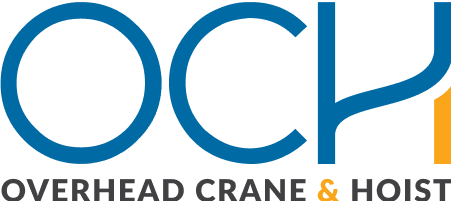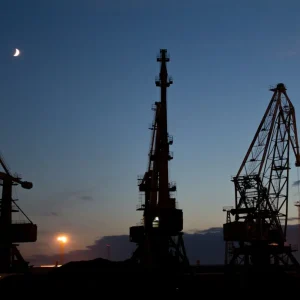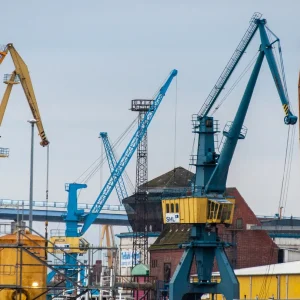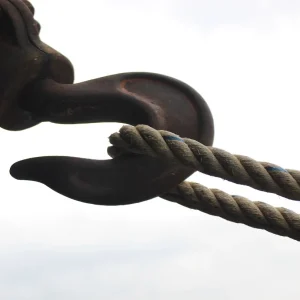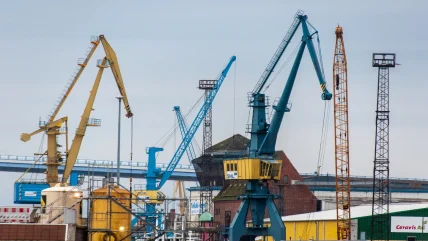
In today’s digital age, the rapid dissemination of information has revolutionised the way industries operate. However, alongside this digital transformation comes the pervasive challenge of misinformation and disinformation. This issue has far-reaching implications for various sectors, including the crane builders, hoist, and industrial lifting equipment industry in North America. This article delves into the impact of false information on this sector, exploring its origins, consequences, and potential solutions.
Understanding Misinformation and Disinformation
Misinformation refers to false or inaccurate information spread without malicious intent. In contrast, disinformation is deliberately misleading or biased information intended to deceive. Both forms of false information can significantly disrupt industries, leading to misconceptions, financial losses, and operational inefficiencies.
Origins of Misinformation and Disinformation
Several factors contribute to the spread of misinformation and disinformation:
Digital Media: The rise of social media platforms and online forums has made it easier to share and access information, often without verification.
Lack of Expertise: Individuals without industry knowledge may unintentionally spread inaccurate information.
Malicious Intent: Competitors or other malicious entities may deliberately disseminate false information to gain a competitive edge or damage reputations.
Echo Chambers: Online communities with similar beliefs can reinforce misinformation, making it more difficult to correct.
The Crane Builders and Hoist Industry: An Overview
The crane builders, hoist, and industrial lifting equipment industry is a critical component of North America’s industrial landscape. This sector includes manufacturers, distributors, and service providers involved in producing and maintaining cranes, hoists, and related equipment used in various industries such as construction, manufacturing, and logistics.
Key Players
Prominent companies in the North American market include:
- Konecranes
- The Manitowoc Company, Inc.
- Terex Corporation
- Columbus McKinnon Corporation
- Ingersoll Rand
These companies are renowned for their innovative solutions, robust safety standards, and comprehensive service offerings.
Industry Challenges
Despite its importance, the industry faces several challenges, including:
Technological Advancements: Keeping up with rapid technological changes requires significant investment in research and development.
Regulatory Compliance: Adhering to stringent safety and environmental regulations is crucial but can be costly and complex.
Supply Chain Disruptions: Global supply chain issues can affect the timely availability of raw materials and components.
Skilled Labour Shortages: Finding and retaining skilled workers is an ongoing challenge.
Impact of Misinformation and Disinformation on the Industry
Misinformation and disinformation can exacerbate these challenges in various ways:
Operational Disruptions
False information about equipment performance, safety standards, or regulatory changes can lead to operational disruptions. For example, if a company incorrectly believes that a new safety regulation has been implemented, it might halt production to comply unnecessarily, causing delays and financial losses.
Financial Implications
The financial impact of misinformation and disinformation can be significant. Stock prices may be affected by false rumours about a company’s financial health or product recalls. Investors may withdraw their support based on inaccurate information, leading to decreased market capitalisation and investment opportunities.
Reputation Damage
A company’s reputation is one of its most valuable assets. Disinformation campaigns can tarnish reputations, leading to loss of trust among customers, partners, and investors. For instance, false claims about product defects or safety issues can drive customers to competitors and result in costly litigation.
Safety Concerns
Safety is paramount in the crane builders and hoist industry. Misinformation regarding safety standards, equipment maintenance, or operational procedures can lead to accidents and injuries. This not only endangers workers but also results in legal liabilities and increased insurance costs.
Supply Chain Issues
False information about supply chain disruptions, such as unverified claims of material shortages or transportation delays, can cause unnecessary panic and lead to overstocking or understocking of critical components. This disrupts production schedules and increases operational costs.
Case Studies
Case Study 1: False Safety Alarm
In 2021, a prominent crane manufacturer faced a significant challenge when a false rumour about a critical safety defect in their latest crane model spread on social media. The misinformation originated from an unverified source and quickly gained traction, leading to widespread concern among customers and industry stakeholders.
Impact:
- The company experienced a sharp decline in sales as customers postponed purchases.
- An internal investigation and public relations campaign were necessary to dispel the rumours, costing the company millions of dollars.
- Despite efforts to correct the misinformation, some customers permanently switched to competitors, resulting in a long-term revenue loss.
Case Study 2: Supply Chain Disruption Myth
In 2022, a leading hoist manufacturer faced a crisis when false information about an impending steel shortage spread through industry forums. The misinformation claimed that a major steel supplier had gone bankrupt, which would severely impact the availability of materials needed for hoist production.
Impact:
- The company reacted by placing large orders to secure steel supplies, leading to unnecessary inventory build-up and increased storage costs.
- Competitors also panicked, further straining the supply chain and driving up prices.
- Once the misinformation was debunked, the market stabilised, but the financial impact on the manufacturer and the industry as a whole was substantial.
Strategies to Combat Misinformation and Disinformation
Strengthening Internal Communication
Ensuring that all employees are well-informed about company policies, safety standards, and regulatory requirements can help prevent the internal spread of misinformation. Regular training sessions and clear communication channels are essential.
Engaging with Industry Associations
Industry associations such as the Crane Manufacturers Association of America (CMAA) and the Hoist Manufacturers Institute (HMI) can play a crucial role in disseminating accurate information. Companies should actively participate in these associations to stay informed and contribute to industry-wide efforts to combat misinformation.
Leveraging Technology
Technological solutions can help identify and mitigate the spread of misinformation. For example:
AI and Machine Learning: These technologies can monitor online platforms for false information and alert companies in real-time.
Blockchain: Implementing blockchain for supply chain management can enhance transparency and traceability, making it easier to verify the authenticity of information.
Public Relations and Crisis Management
Having a robust public relations strategy is crucial for managing the fallout from misinformation and disinformation. Companies should be prepared to respond quickly and transparently to false claims. This includes:
- Rapid Response Teams: Establishing teams dedicated to monitoring and addressing misinformation.
- Media Engagement: Proactively engaging with media outlets to provide accurate information and counteract false narratives.
- Customer Communication: Keeping customers informed through regular updates and transparent communication channels.
Collaborating with Regulatory Bodies
Working closely with regulatory bodies such as the Occupational Safety and Health Administration (OSHA) and the American National Standards Institute (ANSI) can help ensure that accurate information about safety standards and regulations is disseminated. This collaboration can also aid in identifying and addressing false information promptly.
Conclusion
Misinformation and disinformation pose significant challenges to the crane builders, hoist, and industrial lifting equipment industry in North America. These false narratives can disrupt operations, damage reputations, and lead to substantial financial losses. However, by understanding the origins and impacts of misinformation, and by implementing robust strategies to combat it, the industry can mitigate these risks and continue to thrive.
Through strengthened internal communication, active engagement with industry associations, leveraging technological solutions, and effective public relations and crisis management, companies can protect themselves from the detrimental effects of false information. By collaborating with regulatory bodies and maintaining a proactive stance, the industry can ensure that accurate and reliable information prevails, safeguarding its future and upholding its reputation for safety and innovation.
